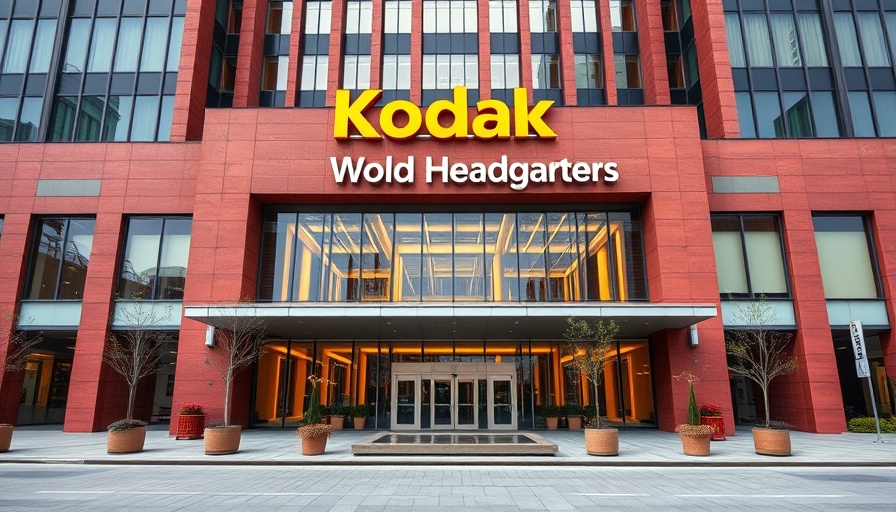
Understanding Kodak's Financial Woes
Eastman Kodak Company, once a titan of the photography industry, is facing significant financial challenges that raise concerns about its future. As of August 12, 2025, Kodak disclosed in its regulatory filings that it may struggle to meet its forthcoming debt obligations due within the next 12 months. The company has around $155 million in cash but lacks committed financing to address these debts. Such disclosures are not just legal formalities; they signal critical financial distress.
The Legacy and Transformation of Kodak
Founded in 1880 by George Eastman, Kodak played a pivotal role in shaping modern photography. Its iconic Brownie and Instamatic cameras made photography accessible to the masses. However, Kodak has endured a tumultuous history, suffering greatly from the digital revolution which led to its bankruptcy in 2012. The company attempted to pivot post-bankruptcy by focusing on commercial and packaging printing. Today, Kodak is also investing in pharmaceutical manufacturing, eyeing production of regulated drugs this year, marking a significant shift from its origins.
The Impact of Financial Uncertainty on Kodak's Employees and Stakeholders
As Kodak navigates these turbulent waters, the implications extend beyond financial statements. Employees and pensioners are left wondering about the security of their benefits and jobs. The recent decision to end its retirement income plan highlights the lengths to which Kodak is willing to go to stabilize its finances. CFO David Bullwinkle expressed optimism that the company would resolve these issues, but the reality is grim. Share prices have plummeted by over 25%, reflecting investor uncertainty and skepticism about Kodak's revival plans.
What Lies Ahead for Kodak?
Looking forward, the key question remains: can Kodak rise again? The company’s bold foray into pharmaceuticals could be its saving grace, potentially tapping into a lucrative market. However, without a clear financial strategy and adequate foresight, Kodak could find its legacy further tarnished. As local Bostonians observe this unfolding story, it serves as a reminder of how crucial adaptability and innovation are in today's fast-paced economy.
 Add Row
Add Row  Add
Add 




Write A Comment